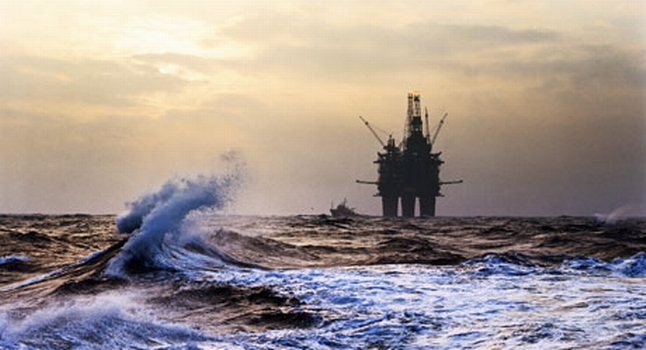In its annual report World Energy Investment 2020, published late last month, the International Energy Agency describes ‘drastically altered’ energy markets in the wake of the Covid-19 Pandemic. It documents the largest fall in energy sector investment ever and uncovers historic shifts along the way, such as that for the first time ever there will be more consumer spending on electricity than on oil. More crucially, it asserts that the sudden fall in investment flows, in all energy sectors, leaves a troubling legacy for the future, for conventional and for ‘clean’ energy.
The report states bluntly, ‘The energy industry that emerges from the crisis will be significantly different from the one before.’
But how? The IEA does not predict. Instead it lays out the main factors that investors should be monitoring.
Drastic drop in oil & gas
For its new report the IEA draws upon its extensive tracking of investment and capital flows. It looks at capital expenditures by companies and governments. It examines investment from institutional investors and venture investors to assess the levels of investment now flowing into energy supply (major fuels, electricity supply), efficiency, and R&D. Its estimates for 2020 are based on actual data though mid-May and assume a U-shape (not V-shape) economic recovery.
What the agency expected last year was that total energy investment (fuel, power, end use and efficiency) would grow by 2%, the largest annual rise in six years. Now it is expected to fall from $1.9 trillion to $1.5 trillion, a 20% decline in 2020 compared to last year. Of course, this decline – the largest recorded – is due to the pandemic and the shocking fall in energy sector revenues (government and corporate), which are likely to fall by over $1 trillion this year.
The losses are astounding. In the oil and gas sector, upstream investment is expected to drop from $483b last year to $347b in 2020; a drop of almost one-third as the industry adjusts to the sudden drop in demand. All of the major and national oil companies have cut planned spending. Similarly, investment in coal production is anticipated to fall 25% this year, although the report notes that the coal sector may not be facing a sudden crisis, as approvals of new coal-fired power plants this year are twice the rate of last year, mostly for new plants in China.
The major oil companies have reported enormous cutbacks in upstream investment, averaging more than 25% compared to last year, with ExxonMobil making the largest reduction. National oil companies, for their part, have so far not made many public announcements, but Saudi Aramco said it will cut capital expenditure by as much as 25% from $33 billion last year. The UAE’s Adnoc has announced the cancellation of large tenders.
The IEA report spells out the investment deficiencies now afflicting the oil and gas sector in countries throughout the world and along the value chains upstream and downstream. The deep and well known impact on US shale producers is shown in detail here. The report says that the declines in capital investment are threatening supplies five years down the road, when a failure to invest now could leave much tighter markets and rising prices. It says that if oil sector investment were to stay at 2020 levels, this would reduce the previously-expected level of supply in 2025 by almost 9 million barrels a day.
Yet that potential outcome is closely related to the kind of recovery that occurs in the energy sector. The new IEA report notes that in the wake of previous crises, such as the 2008-09 recession, the rebound in fossil fuels and associated carbon emissions was larger than the preceding decline. A recovery that’s tilted toward low carbon energy with the support of national stimulus programs, would create a different outcome this time.
Power sector’s softer slide
It is in the power sector where the possibilities for a transition to a low-carbon energy sector are most apparent. And here also the IEA sees a troubling trend in current investment patterns.
In World Energy Investment 2020 the IEA says that the power sector will not be hit as hard as oil and gas. At the beginning of the year it foresaw a rise of approximately 2% in investment, as suggested by capital expenditure planning and capacity expansion activities. Instead, overall investment in capital and capacity expansion around the world will decline from $757 billion last year to $679 billion in 2020, a fall of 10% due to the pandemic. This includes investment in electricity networks, renewable power, nuclear power, fossil fuel power, and battery storage.
Investment in renewable power worldwide is anticipated to fall from $311 billion last year to $281 billion in 2020, a 10% fall with final investment decisions on utility-scale solar and wind projects already declining in the first quarter. Meanwhile investment in electricity grids, which has been declining in a number of countries including China (although rising in the US), is set to fall from $273 billion last year to an estimated $248 billion in 2020, a decline of about 9%. This is occurring in the face of a drop in global electricity demand of 5% worldwide in 2020, according to the IEA.
Foreboding for the future
This fall in investment in renewables and power grids is seen with foreboding by the IEA. While renewables, with low operating costs and priority access to networks, have been more resilient than fossil fuels in the power sector, and therefore rising in their share of power production as the crisis has unfolded, their long-term growth prospects remain unclear.
“The historic plunge in global energy investment is deeply troubling for many reasons,” said Dr. Fatih Birol, the IEA’s Executive Director, in statements accompanying the new report. “It means lost jobs and economic opportunities today, as well as lost energy supply that we might well need tomorrow once the economy recovers.”
He continues, referring specifically to low carbon energy: “The slowdown in spending on key clean energy technologies also risks undermining the much-needed transition to more resilient and sustainable energy systems.”
The IEA report refers to the agency’s Sustainable Development Scenario (SDS) to show that current investment levels in low carbon energy sources are insufficient for a sustainable pathway. Investment in low carbon sources, just under $500 billion in 2019, will need to rise to well above $700 billion on average annually by the end of the decade in the SDS, to raise the share of low-carbon power and ensure that systems can operate with sufficient flexibility. Such investment encompasses nuclear, solar and wind, hydro-power and other renewables, and fossil fuels with carbon capture, utilization and storage (CCUS).
In this scenario, solar PV and wind investment would need on average an extra $160 billion of spending each year. Electricity networks would require an extra $150 billion above today’s levels, while other renewables and nuclear would also require higher level of capital. Meanwhile, investment in fossil fuels without CCUS must drop considerably.
The IEA’s analysis shows that the current trajectory of spending on electric grids is falling short of what’s needed to support growing renewables and electrification. Spending on grids worldwide would need to rise by some 50% over the next decade to meet long-term sustainability goals. Spending on ‘digital grids’ would need to surge, too.
Overall, power sector spending in 2019 was about 35% short of the level required in the SDS ten years from now. That’s an enormous gap to cover, showing the need for large scale capital reallocation to meet energy security and sustainability goals. It shows that investment is falling far short of what is required to achieve more flexibility of power systems with much higher shares of variable renewable energy.
Hydrogen rises
On the bright side, World Energy Investment 2020 says that the ongoing fall in costs for renewable energy technologies means that every dollar invested in them buys ever more power. The economics of solar and wind power generation have steadily improved while even lower prices for them are anticipated.
Another bright spot is the rise of the ‘digital grid,’ meaning smart meters, utility automation, EV charging infrastructure and the like. Investment in these, at $40 billion, now makes up more than 15% of total spending on electricity grids. With digital infrastructure investments, electricity systems have enhanced resiliency and ability to operate with higher shares of variable renewables. This IES asserts this has been shown during the recent periods of much lower demand.
As for research and development, the new IEA report sees a risk of faltering investment by governments. The report sees strong trends in research and development for low carbon technologies from both the public sector and companies up through 2019, including strong investment in electric vehicles by automakers. And it sees a positive prospect for maintaining R&D capabilities by governments and companies during the recovery period. However, it warns that should a decline occur in the wake of the crisis, it will negatively impact the development of clean energy technologies long term.
A very bright spot in the IEA’s investment report is actually hydrogen. Interest is rising in hydrogen as an alternative to fossil fuels in many ways. It can power vehicles, store electricity, heat homes, and produce synthetic fuels such as methane or ammonia, among other uses. The IEA report notes that this rising interest is shown in capacity additions of water electrolysers to produce hydrogen, which have expanded rapidly from 2 MWe (electric megawatts) in 2010 to 25 MWe in 2019.
The push is coming from governments in Europe, China, Australia and elsewhere. For example, the Netherlands produced specific hydrogen targets in its 2019 Climate Act, while the Australian government announced a new hydrogen fund just last month. Other governments have indicated possible support for hydrogen as part of their economic recovery measures, although no significant proposals have come forth in the United States.
Interestingly, venture capital is also playing an increasingly important role. The IEA notes that there was a new high in venture capital investment in energy technology start-ups in 2019. Among these, there were more early-stage VC deals for hydrogen start-ups than in any previous year. Over $110 million was invested in 25 deals, the largest being for hydrogen production by new methods including pressurized electrolysers, saltwater splitting, anion electrolyte membranes and photocatalytic reactors. The agency notes that this diversity of technologies shows that competition between electrolyser technologies is not yet settled.
Simon Bennet, an Energy Analyst for the IEA, noted in a recent webinar that there has been a ramping up of hydrogen investment despite the pandemic, with some 600 MW of projects in advanced stages of planning or construction, while it is has become a major area of capital investment in a number of countries’ recovery programs. “The speed with which money is going into this sector is astonishing,” he said.
Coming up
It is precisely now, in the wake of the pandemic and during the hoped-for recovery, that the IEA would expect to see an increase in investment in the power sector and renewables to support a low-carbon transition. Whether it happens, creating a different outcome for this recovery with more emphasis on low carbon energy, will depend to a great extent on the make-up of national stimulus programs.
For more clues on how the energy sector coming out of the current crisis will be different, investors may want to consult upcoming IEA reports. These include the agency’s flagship World Energy Outlookreport to be released on June 18, and a special report on innovation in the energy sector coming in early July.











